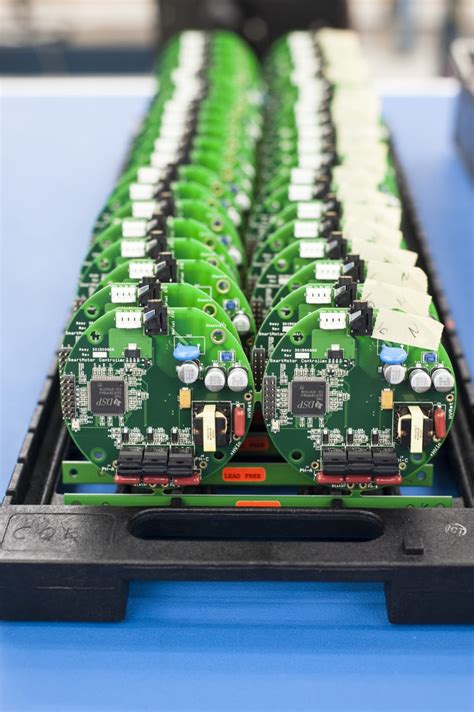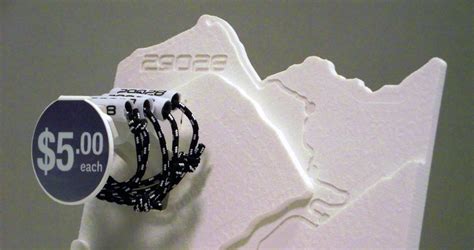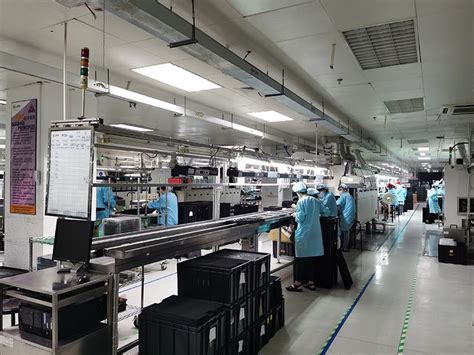Top PCB Assembly Services for Unmatched Quality and Reliability
Key Takeaways
When it comes to selecting the best PCB assembly service, understanding the full landscape of options is crucial. PCB assembly involves several complex processes, and having a reliable partner can significantly impact the quality of your final product. Key factors such as lead time, cost efficiency, and technical expertise should guide your decision. Aim to work with providers that have proven track records in delivering PCBA services with high standards for quality control. A thorough comparative review of top providers will reveal those that not only meet industry benchmarks but also offer innovative solutions tailored to specific needs. It’s essential to pay attention to how these companies implement quality assurance practices, as this will affect both performance and durability in your applications. Engaging with customer testimonials can provide insight into their capabilities and how they’ve successfully managed past projects, helping you make an informed choice suited to your particular requirements. Keeping these key takeaways in mind will position you for success in your next project involving PCBs and their assembly processes.
Understanding PCB Assembly: A Comprehensive Overview
PCB assembly (PCBA) is a fundamental process in electronics manufacturing that integrates various electronic components onto a printed circuit board (PCB) to create a functional electronic product. The process involves multiple stages, including component procurement, soldering, and testing. This intricate operation not only requires precision but also relies on quality control at every step to ensure that the final product meets industry standards and functions as intended.
At the heart of PCB assembly lies the effective combination of manual and automated techniques. Skilled technicians often oversee operations, ensuring that both high-volume productions and custom projects are handled with meticulous attention to detail. Innovations in technology have enabled manufacturers to utilize advanced machinery for surface mount technology (SMT) placement as well as through-hole soldering techniques, which have significantly improved efficiency and accuracy.
| PCBA Phase | Description |
|---|---|
| Component Sourcing | Procuring high-quality components from reputable suppliers. |
| Soldering | Integrating components onto the PCB using solder techniques. |
| Testing | Conducting various tests to ensure functionality and quality. |
“The success of any electronic project hinges on the reliability of its assembly process.”
Furthermore, considerations such as lead times, volume requirements, and cost-effectiveness play a vital role in deciding on the appropriate pcb assembly services provider. By understanding these aspects thoroughly, designers and engineers can select partners who align with their project needs while ensuring unmatched quality and reliability.
Key Factors to Consider When Choosing a PCB Assembly Service
Selecting the right PCB assembly service is crucial for the success of your electronics projects. One of the primary factors to consider is the technology and expertise offered by the service provider. It’s essential to choose a company that specializes in advanced techniques such as surface mount technology (SMT) and through-hole components, as these can significantly impact the quality of your printed circuit boards (PCBs). Additionally, look into their manufacturing capabilities—whether they can handle small production runs or large-scale orders.
Another important aspect is quality assurance processes, which ensure that every PCBA meets stringent quality standards before delivery. This includes thorough testing procedures like Automated Optical Inspection (AOI) and functional testing. Furthermore, review their lead times and flexibility in accommodating urgent requests or changes in order specifications. Lastly, don’t overlook customer service; a responsive and knowledgeable team can make all the difference when issues arise or when you require support throughout your production cycle. By weighing these factors, you can confidently choose a PCB assembly service that aligns with your project’s requirements.
Top Providers in the PCB Assembly Industry: A Comparative Review
When it comes to selecting the best pcb assembly service, understanding the prominent players in the industry is crucial. Leading PCB assembly companies often distinguish themselves through their range of services, quality assurance practices, and technological capabilities. Some of the top providers are known for their ability to handle a variety of projects, from prototype runs to high-volume production. For instance, certain companies excel in quick-turn services that cater to urgent needs while others may focus on offering extensive customization options to meet specific client requirements. Additionally, the integration of pcba with advanced manufacturing technologies such as automated assembly lines and real-time quality monitoring systems plays a significant role in maintaining unmatched quality and reliability. Therefore, when evaluating potential vendors for your pcb assembly needs, it’s important to consider criteria such as lead times, production capabilities, and customer support. An informed choice can elevate your production process and lead to successful project outcomes.
The Importance of Quality Control in PCB Assembly Services
In the realm of PCB assembly, quality control is a critical component that ensures the reliability and functionality of electronic products. Every stage of the pcba process, from design to final inspection, plays a pivotal role in determining the end product’s performance. Effective quality control practices help to identify defects early, allowing for timely corrections that can save both time and resources. By implementing rigorous testing protocols, including Automated Optical Inspection (AOI) and X-ray inspection, providers can guarantee that components are correctly placed and soldered. Moreover, adherence to industry standards and certifications signifies a commitment to high-quality production. Ultimately, choosing a pcb assembly service that prioritizes quality control will not only enhance product durability but also foster trust among clients, ensuring their projects are handled with the utmost precision and care. This focus on quality directly contributes to overall project success and customer satisfaction in a competitive market.
Innovations in PCB Assembly Technology: What You Need to Know
The landscape of PCB assembly (or PCBA) technology is constantly evolving, bringing forth innovative solutions that enhance production efficiency and reliability. One significant advancement is the utilization of automated assembly equipment, which minimizes human error and accelerates the overall assembly process. Such machinery incorporates advanced vision systems that ensure precise component placement, a crucial aspect for high-density boards typical in modern electronics. Additionally, the integration of Internet of Things (IoT) technology allows for real-time monitoring of the assembly line, providing data insights that improve quality control and enable predictive maintenance. Furthermore, advancements in soldering technologies, such as selective soldering and lead-free solder options, not only enhance connection quality but also align with global environmental standards. When selecting a PCB assembly service, understanding these technological innovations can empower organizations to make informed decisions that ensure superior product reliability and performance in their electronic designs. As the demand for complex circuit boards increases, staying abreast of these developments is essential for achieving optimal assembly outcomes in the competitive marketplace.
Customer Testimonials: Success Stories from Leading PCB Assemblers
Customer satisfaction is paramount in the realm of pcb assembly, and the success stories shared by clients of renowned PCB assembly service providers underscore the significance of quality and reliability in this industry. For instance, a tech startup recently partnered with a leading firm for their first production run, and they reported remarkable improvements in both efficiency and product quality. Their PCBA underwent rigorous testing phases, which were instrumental in identifying minor issues before mass production. This thorough attention to detail not only saved valuable time but also ensured that the final product met their high standards.
Another success story comes from a well-established electronics manufacturer that struggled with inconsistent quality from previous suppliers. After switching to a pcb assembly service known for its stringent quality control processes, they experienced a substantial reduction in defects and an increase in overall productivity. Clients have praised their ability to deliver precise builds that align perfectly with design specifications, enhancing operational flow significantly.
These testimonials reflect the importance of choosing the right pcb assembly service provider. With multiple service options available, understanding how each company approaches quality assurance and customer support can greatly influence the success of your projects. Many clients have reported feeling confident when entrusting their designs to these leading assemblers, contributing to smooth project execution and ultimately saving costs associated with manufacturing errors. Each of these stories exemplifies how reliable partnerships in PCBA not only foster innovation but also ensure long-lasting success for companies across various sectors.
Tips for Optimizing Your PCB Design for Better Assembly Outcomes
To achieve superior results in your PCB assembly process, it’s essential to focus on optimizing your design before it reaches production. Start by ensuring that your design adheres to the design for manufacturability (DFM) principles, which can prevent potential issues during the assembly phase. For instance, simplifying complex geometries and reducing the number of layers can ease the manufacturing process and decrease costs without sacrificing functionality. Additionally, consider utilizing standard components wherever possible, as these are more easily sourced and typically better supported by PCB assembly services.
Another critical component is managing the silkscreen layer effectively; avoid placing important markings over pads or vias which could hinder soldering. It’s also wise to include clear outlines and proper dimensions on this layer to assist assemblers in identifying components quickly. Furthermore, thermal management must not be overlooked; assess how heat will dissipate from your design to prevent overheating issues that can arise during operation.
It’s also advantageous to integrate test pads into your layout, which facilitate easier testing post-assembly, ensuring functional integrity before distribution. Lastly, maintaining comprehensive documentation accompanying your design will aid any assembly service you choose in understanding the intricacies of your project. Properly optimizing these aspects not only helps facilitate a smoother PCBA process but also guarantees that the end product meets high standards of quality and reliability that you expect from top-rated PCB assembly providers.
Conclusion
In the realm of electronics, the choice of a PCB assembly service is paramount to ensure the success of any project. As we’ve explored, pcba providers vary significantly in their offerings, making it essential to assess key factors such as quality control, technological innovations, and customer service. The industry’s top providers are not only known for their advanced capabilities but also for their commitment to precision and expertise, which play crucial roles in delivering a reliable final product. As you consider your options, remember that a solid partnership with a reputable pcb assembly service can greatly enhance your production outcomes. Investing time in understanding each provider’s unique strengths will lead to better results and ultimately contribute to the overall success of your projects. Embracing advancements in pcba technology while prioritizing quality will ensure that your electronics meet both functionality and durability standards, allowing you to thrive in a competitive market.
FAQs
What is PCB assembly?
PCB assembly is the process of connecting electronic components to a printed circuit board (PCB) to form a functional electronic circuit. This process involves several steps including placement of components, soldering, and testing.
What are PCBA and its significance?
PCBA, short for Printed Circuit Board Assembly, refers specifically to the completed board that has been populated with electronic components. Its significance lies in its functionality; without PCBA, electronic devices cannot operate as intended.
How do I choose the right PCB assembly service?
When selecting a PCB assembly service, consider factors like quality assurance standards, manufacturing capabilities, turnaround time, and customer support. It’s essential to partner with a service that aligns with your project requirements.
What is the role of quality control in PCB assembly?
Quality control is crucial in PCB assembly, as it ensures that each board meets required specifications and functionalities. It helps identify defects early in the production process, preventing costly errors and ensuring high reliability.
Can innovations impact PCB assembly technology?
Yes, innovations such as advanced automation and real-time monitoring can significantly enhance PCBA, improving efficiency and reducing errors during the manufacturing process.
For more comprehensive insights into PCB assembly, please visit this link.







